Boat Safety Tips You Need to Know for Memorial Day
Navigation—buoys, marks and beacons
Traffic lights and signs guide drivers on the roads. Buoys and beacons and navigation lights do the same on the water.
IALA buoyage system
In Queensland, the organization of buoys, beacons, marks and lights used is compliant with the International Clan of Marine Aids to Navigation and Lighthouse Authorities (IALA) Buoyage System 'A'.
Each blazon of marking has its ain colour, shape, meridian mark and light combination.
To navigate safely, y'all need to know each mark and its pregnant.
Lateral marks
Lateral marks testify the port (left) and starboard (right) sides of navigable waters or channels.
A port marker is red
with a tin-like shape.
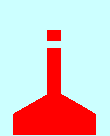
At night, a port buoy shows
a red flashing low-cal (when lit).
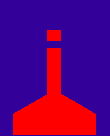
A starboard marker is greenish
with a cone-like shape.
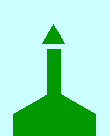
At night, a starboard buoy shows
a light-green calorie-free (when lit).
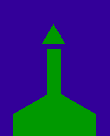
When a port and starboard lateral marking are reverse each other, travel between them. Sometimes they are non in pairs though. When there is a single lateral marking, the prophylactic side to laissez passer depends on the direction of travel (or buoyage).The management of buoyage is shown on charts past the symbol:

When travelling upstream or abroad from the bounding main:
- keep port (blood-red) marks on your port-hand side (left)
- keep starboard (greenish) marks on your starboard-mitt side (correct).
When travelling downstream or towards the bounding main:
- keep port (ruby) marks on your starboard-hand side (right)
- keep starboard (dark-green) marks on your port-hand side (left).
Central mark features
Cardinal marks show where the deepest and safest h2o is by using a compass. They can marking:
- where to find the deepest h2o in an expanse
- the rubber side to pass a danger
- a characteristic in a aqueduct (for instance, a bend, junction or the end of a shoal).
Cardinal marks have black and xanthous bands with black double cones on top showing the different compass management that identifies the safest and deepest water to travel in.
At night, each blazon of cardinal mark has a flashing white calorie-free with different groupings of flashes (continuous, or groups of 3, six or 9).
To remember each type, recall of a compass confront with the numbers of a clock marked on information technology abreast each direction (Due north, East, South and Due west).
North cardinal mark
Due north central marks testify at that place is safe water to the North of the marking.
The top cones indicate up or North.

At night, the white lite
flashes quickly or very quickly
and continuously.
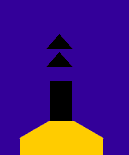
East central marker
Eastward cardinal marks show there is safe water to the East of the mark.
The top cones are in the shape of
an egg. To retrieve this, think of
'due east' for egg and for East.
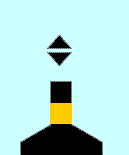
At nighttime, the white low-cal flashes
chop-chop or very apace 3 times
every five or 10 seconds.
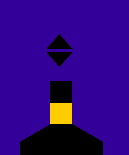
Southward key mark
Due south cardinal marks show there is safe water to the South of the marking.
The top cones bespeak down or South.
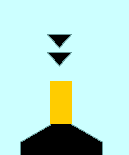
At night, the white calorie-free flashes
quickly or very quickly 6 times
followed by a long wink every
10 or 15 seconds.
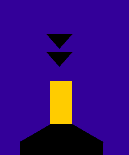
Westward cardinal marker
West key marks show at that place is prophylactic water to the West of the mark.
The top cones make the shape of
a wine drinking glass. To remember this,
think of 'w' for wine glass and for West.
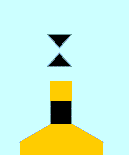
At night, the white light
flashes quickly or very
apace 9 times every
10 or 15 seconds.
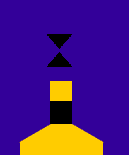
Isolated danger marks
Isolated danger marks show where there is an isolated danger that has navigable h2o all circular it (for example, an isolated shoal, rock or wreck) – merely don't pass besides shut.
Isolated danger marks are black with 1 or more cerise horizontal bands and 2 spheres every bit the top mark.
At night, the white light flashes in groups of two.
To remember isolated danger marks, recall of 2 flashes of light with 2 spheres as the tiptop marks.

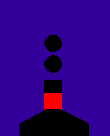
Safe water marks
Safe h2o marks evidence that there is navigable h2o all around the marker. For example, fairway, mid-channel or landfall mark.
Condom water marks have red and white vertical stripes with a single red sphere as the elevation marker.
At dark, a single white light shows ane long flash every 10 seconds.
To remember safe h2o marks, think of i light with ane long flash and 1 sphere for the meridian marker.

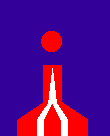
Special marking features
Special marks testify a special area or characteristic. For case, to show that a channel divides or to mark cables or pipelines.
They tin also mark a channel within a channel. For example, a channel for deep draught ships in a broad river or bay where the limits of the channel for normal navigation are marked by red and green lateral buoys or beacons.
The direction to travel effectually a special marker is usually referred to or shown on charts.
Special marks are yellow and sometimes take a yellow X as the summit mark.
At night, the flashing low-cal is xanthous.


Emergency wreck mark buoy
Emergency wreck marker buoys are used to identify new dangers or wrecks.
They take blue and yellow vertical stripes and are a pillar or spar shape with a yellow cross as the superlative mark.
At night, the flashing lite alternates between 1 second of blue light and ane 2d of yellow light, with 0.v seconds of darkness in between.

Other navigational aids
There are some other aids to navigation that you need to exist enlightened of.
Leads
Leading lights/beacons unremarkably display a triangle shape. The front pb has its noon pointing upwardly and the rear or dorsum pb has its apex pointing downward.
When the leads are in line, you are travelling in the center of the channel. Where leads are used to marker the middle of larger shipping channels minor vessels should travel on the starboard side of the channel to continue clear of large ships. This is especially important at dark.
Fixed white day lights are sometimes used to mark the leads. At night, major leads are usually lit with blue lights.
Bluish center aqueduct mark
Blue middle aqueduct marks are fixed blue lights that mark the middle of the channel for vessels passing nether a span.
On a nautical chart, they are normally shown as a star with a flash symbol.
Directional and sector lights
Directional and sector lights have a similar purpose to leading lights at channel entrances and inshore waters.
Directional lights can be used as steering marks and sector lights display a low-cal of different colours (usually greenish, white and red).
Port traffic bespeak lights
Port traffic bespeak lights have three red vertical flashing lights that are remotely controlled by Maritime Safety Queensland'southward vessel traffic services to tell others in the area that big commercial ships are moving in the port, harbour, marina or other confined waterway.
Vessels must not enter or depart the port or harbour surface area when the port traffic signal lights are flashing.
Source: https://www.msq.qld.gov.au/Safety/Navigation-buoys-marks-and-beacons
0 Response to "Boat Safety Tips You Need to Know for Memorial Day"
Post a Comment